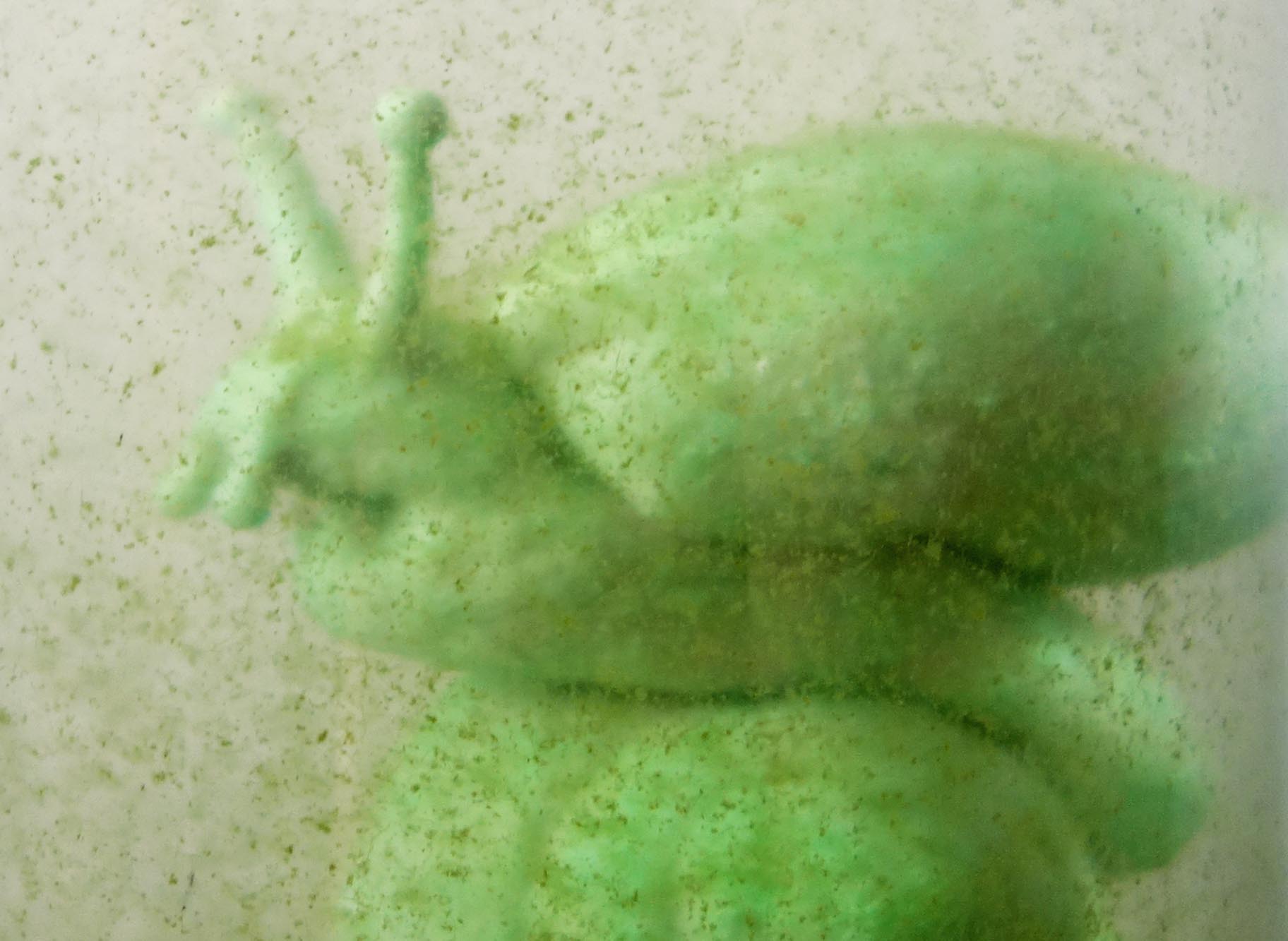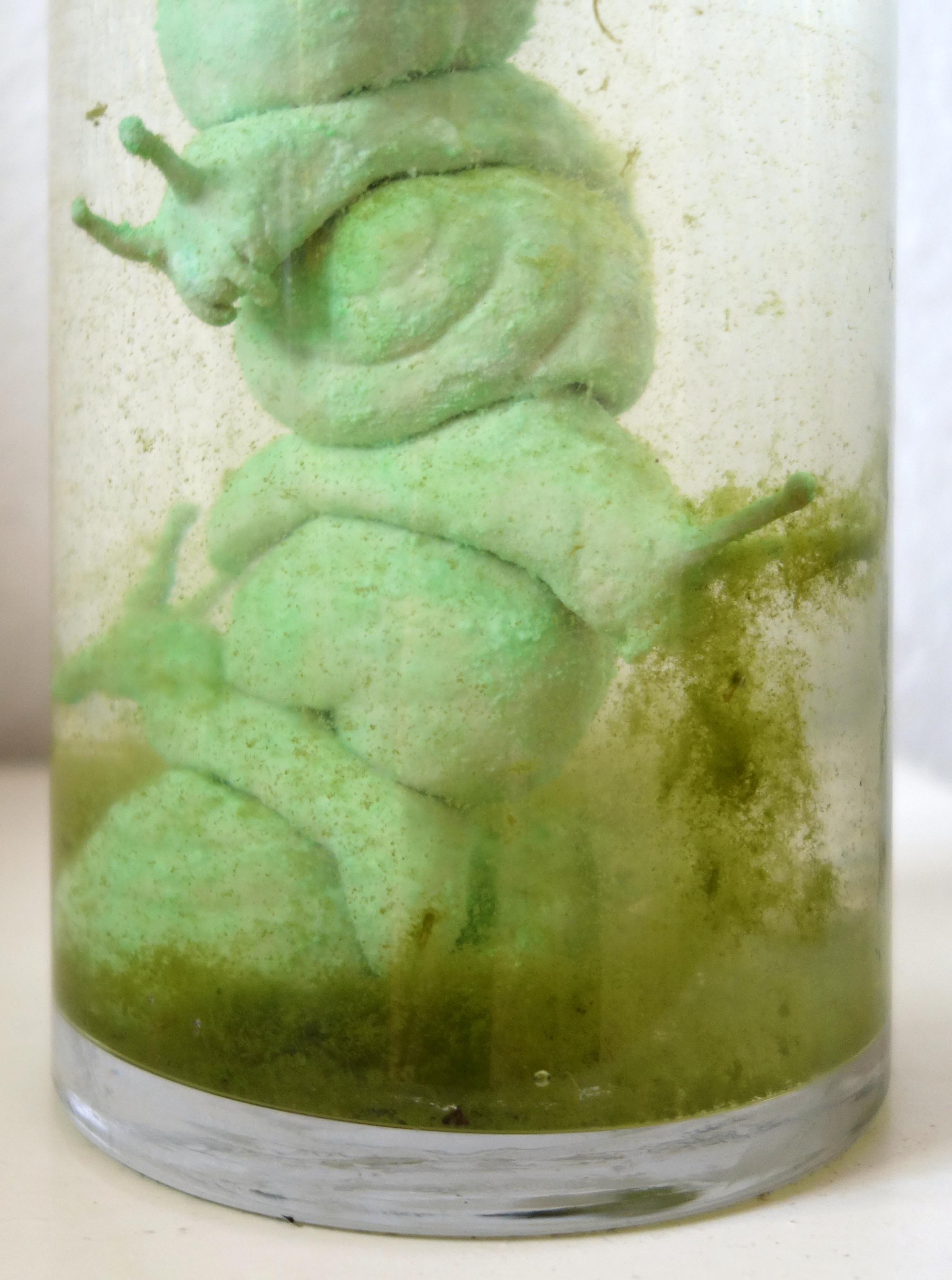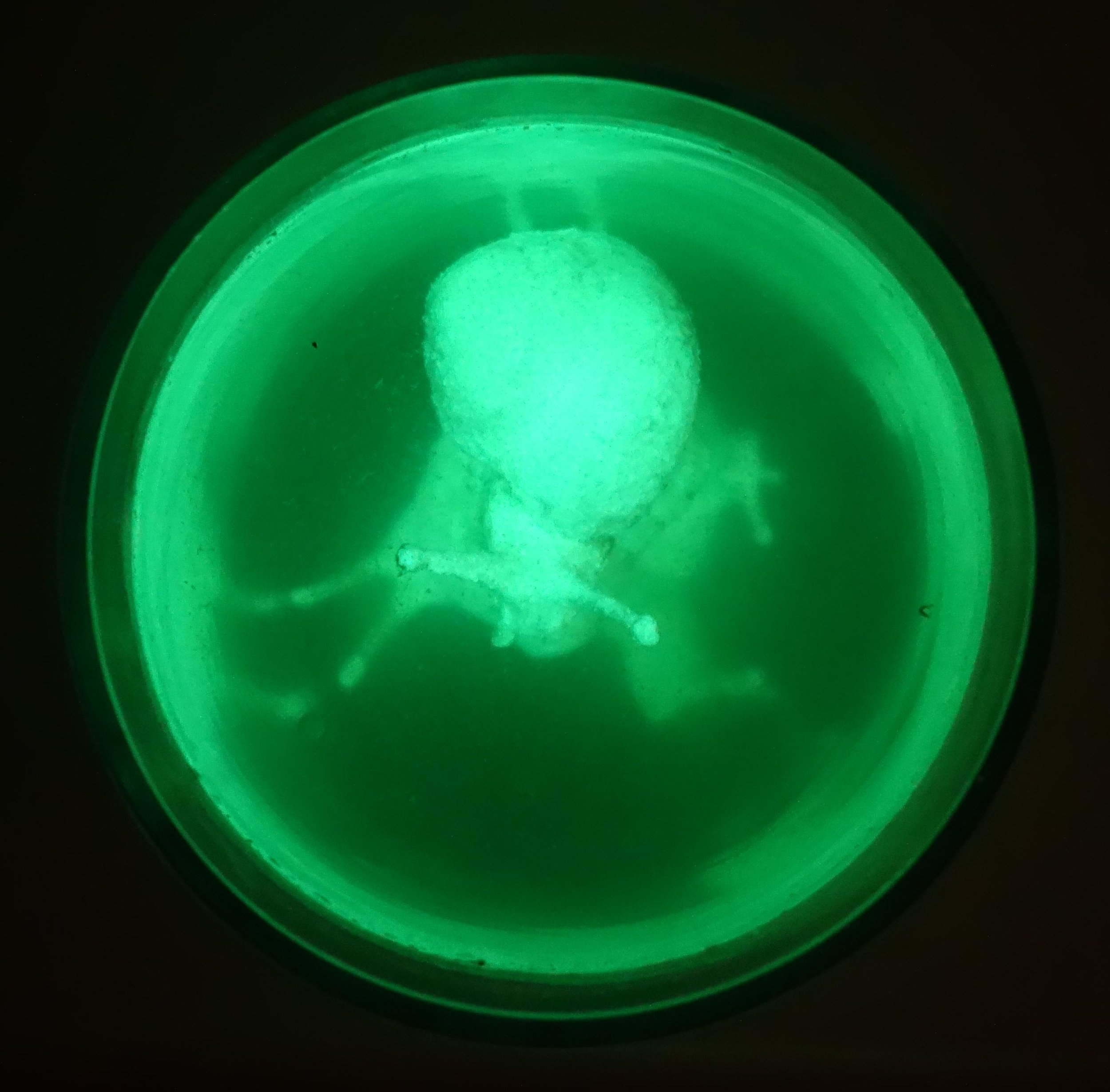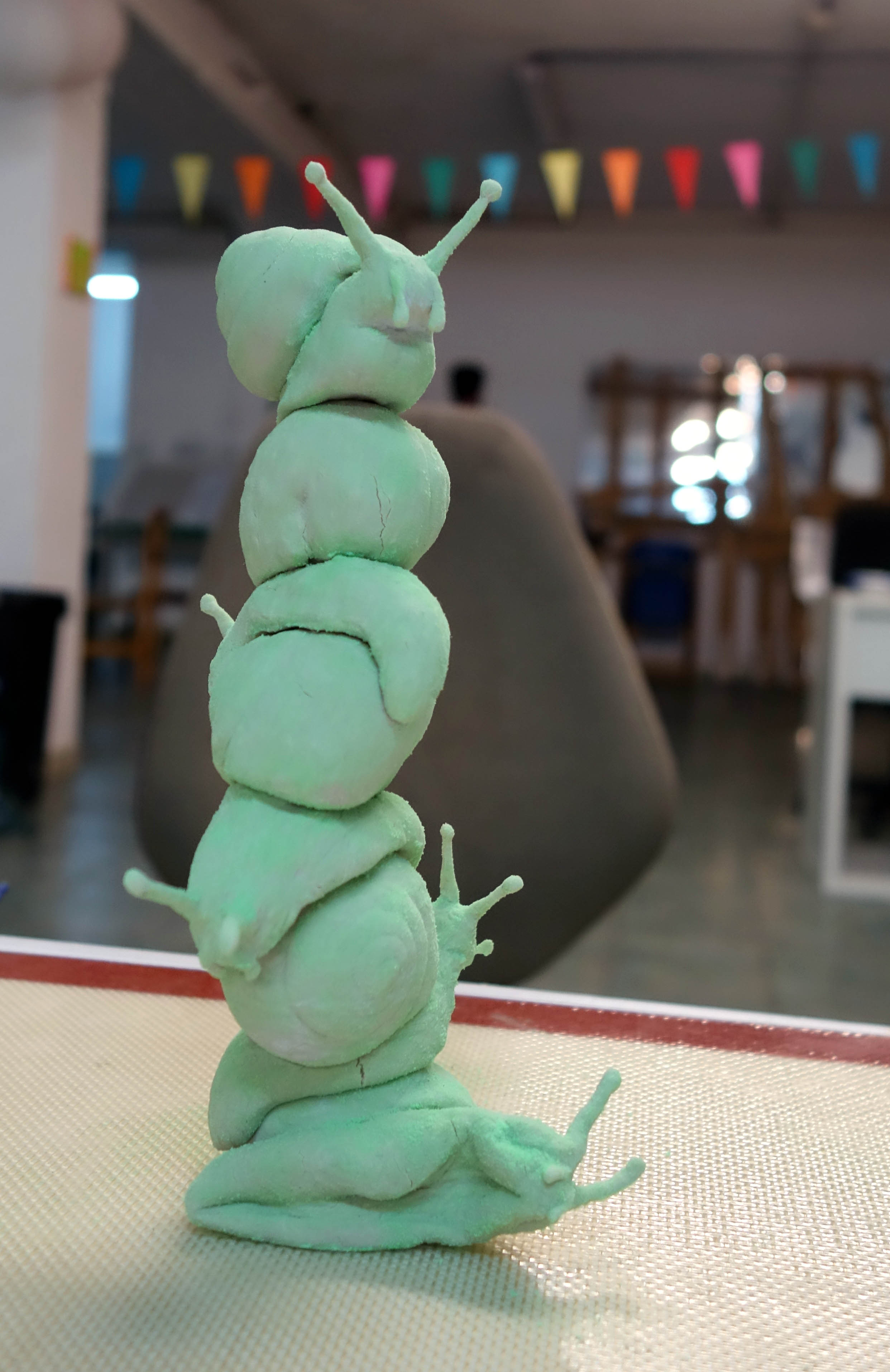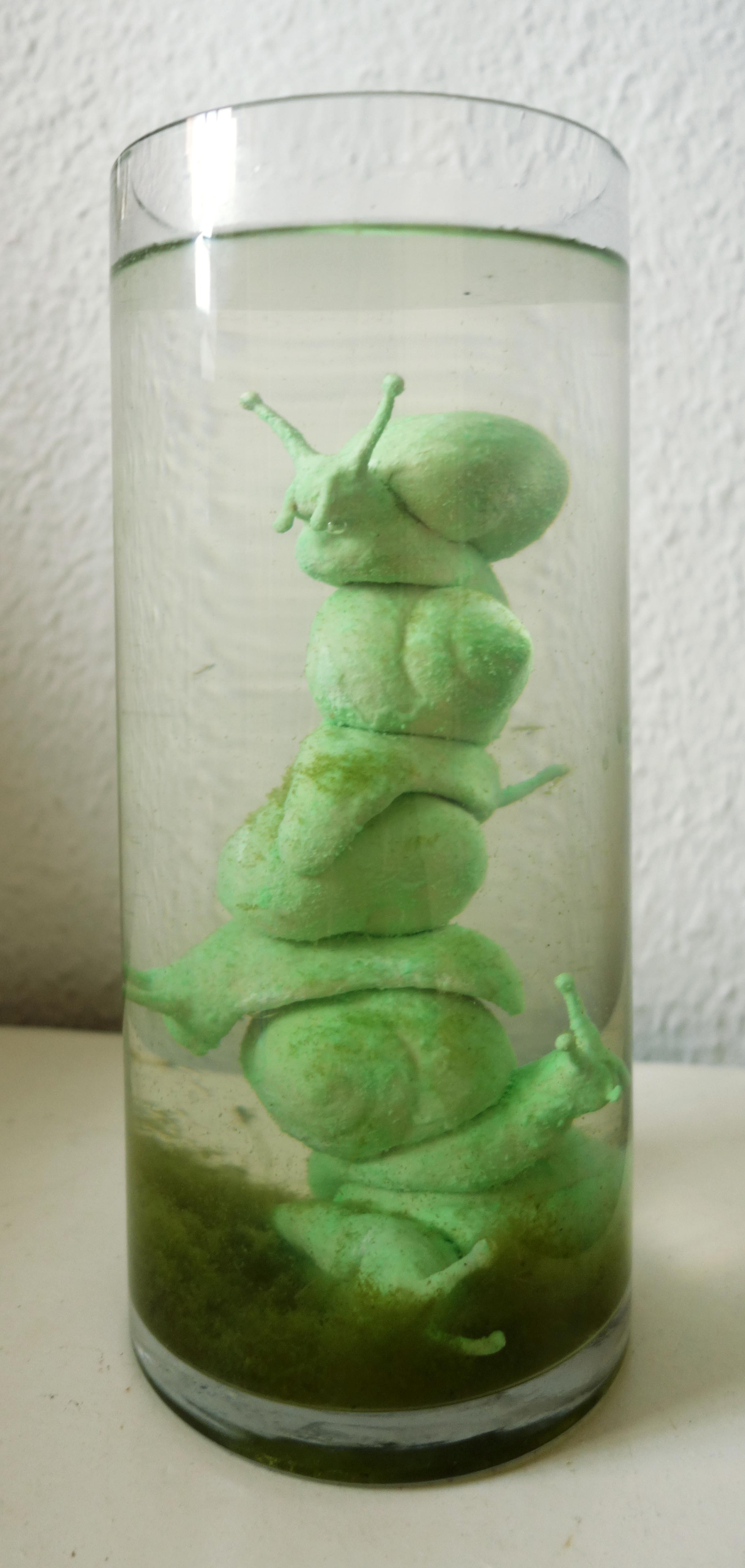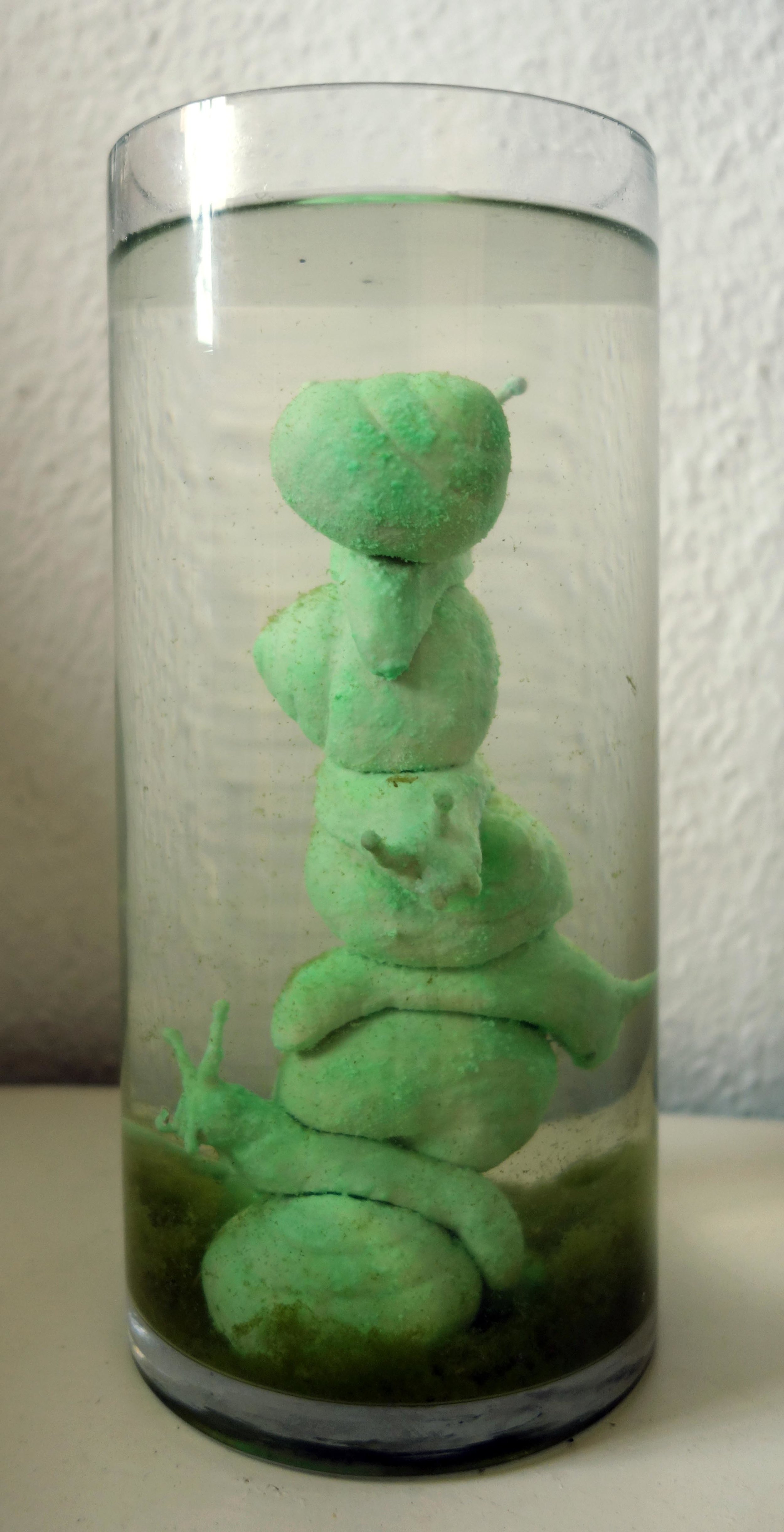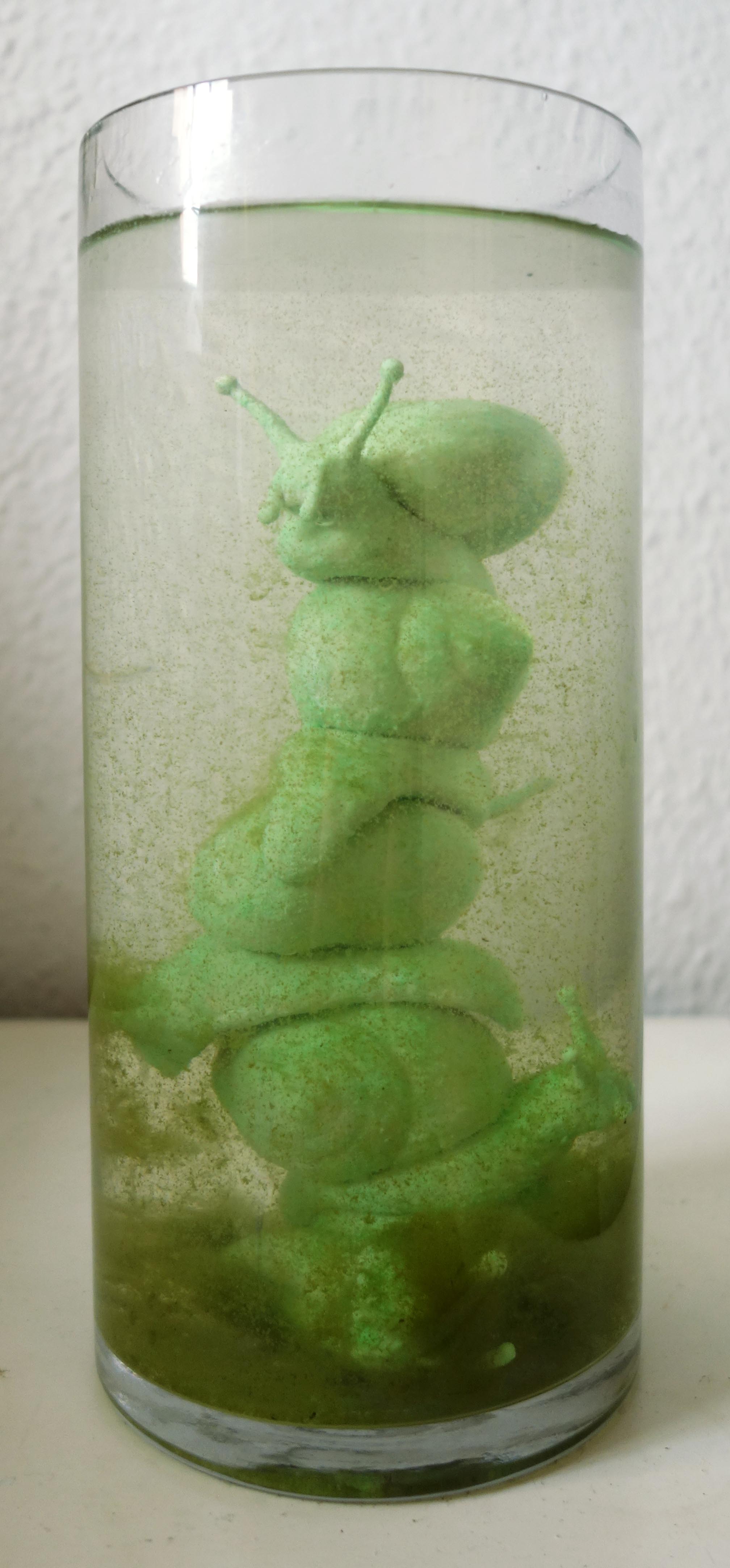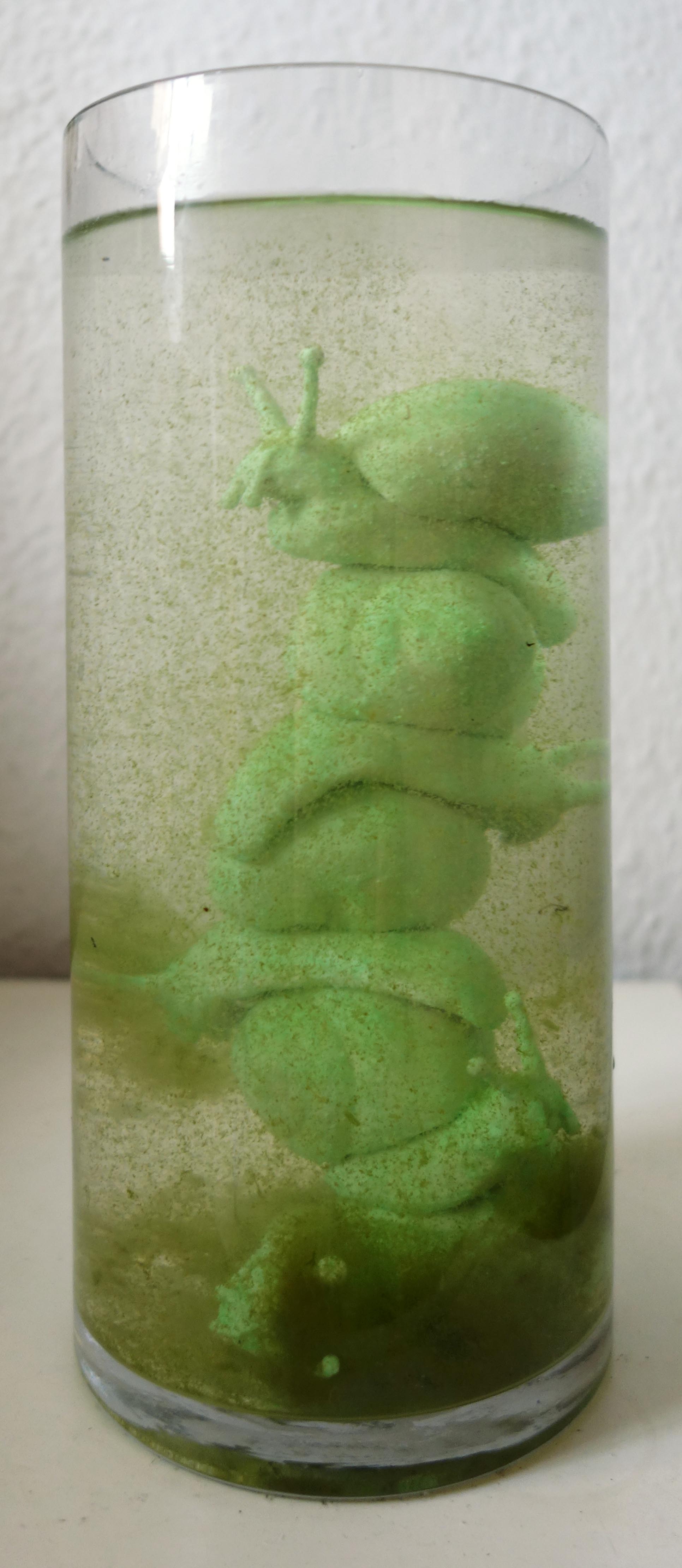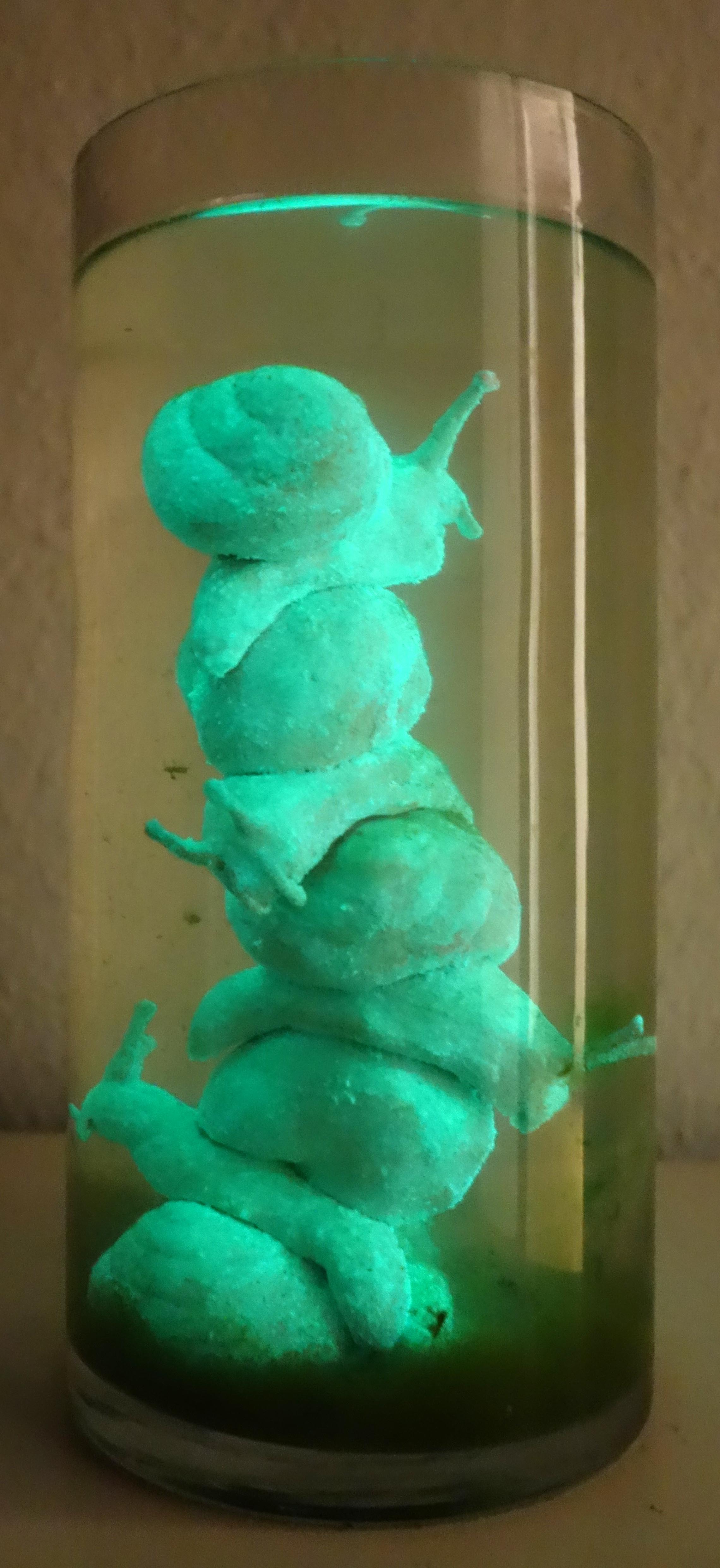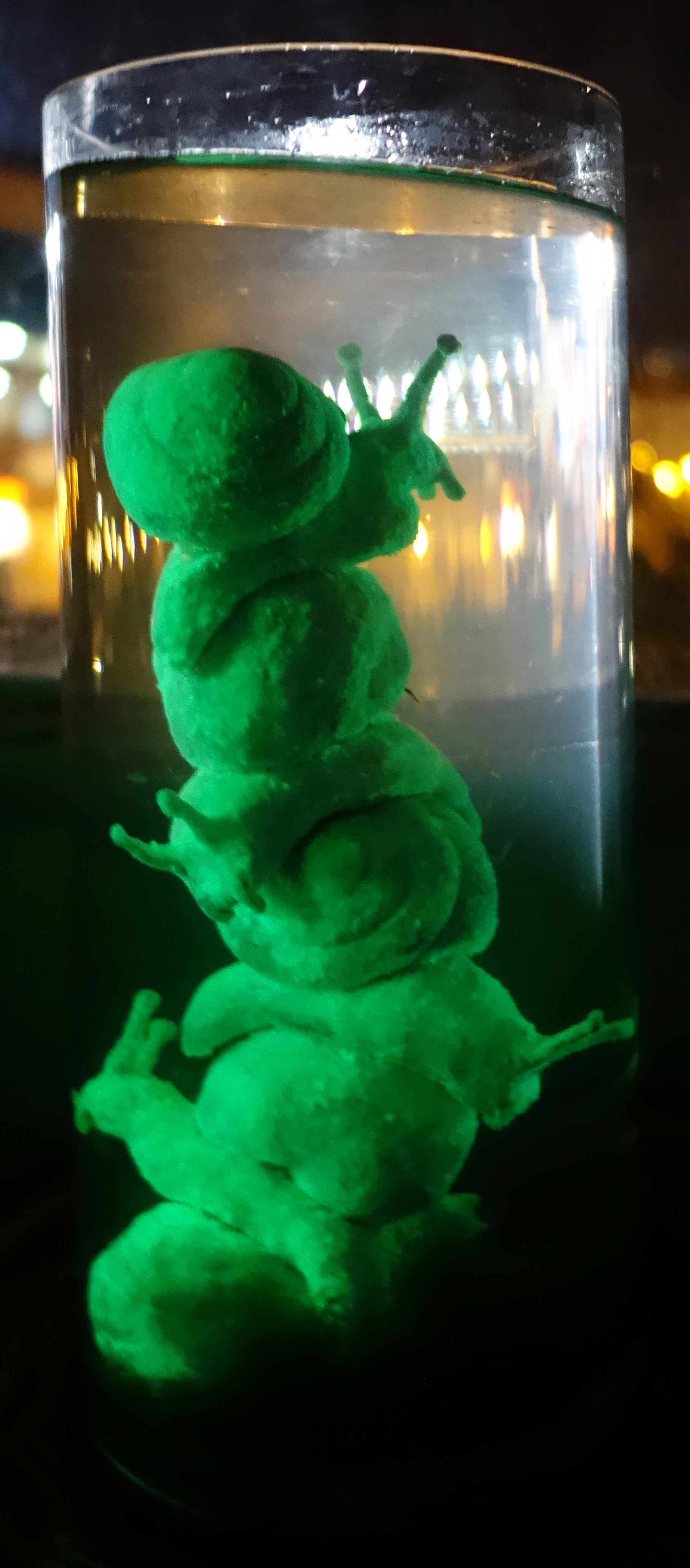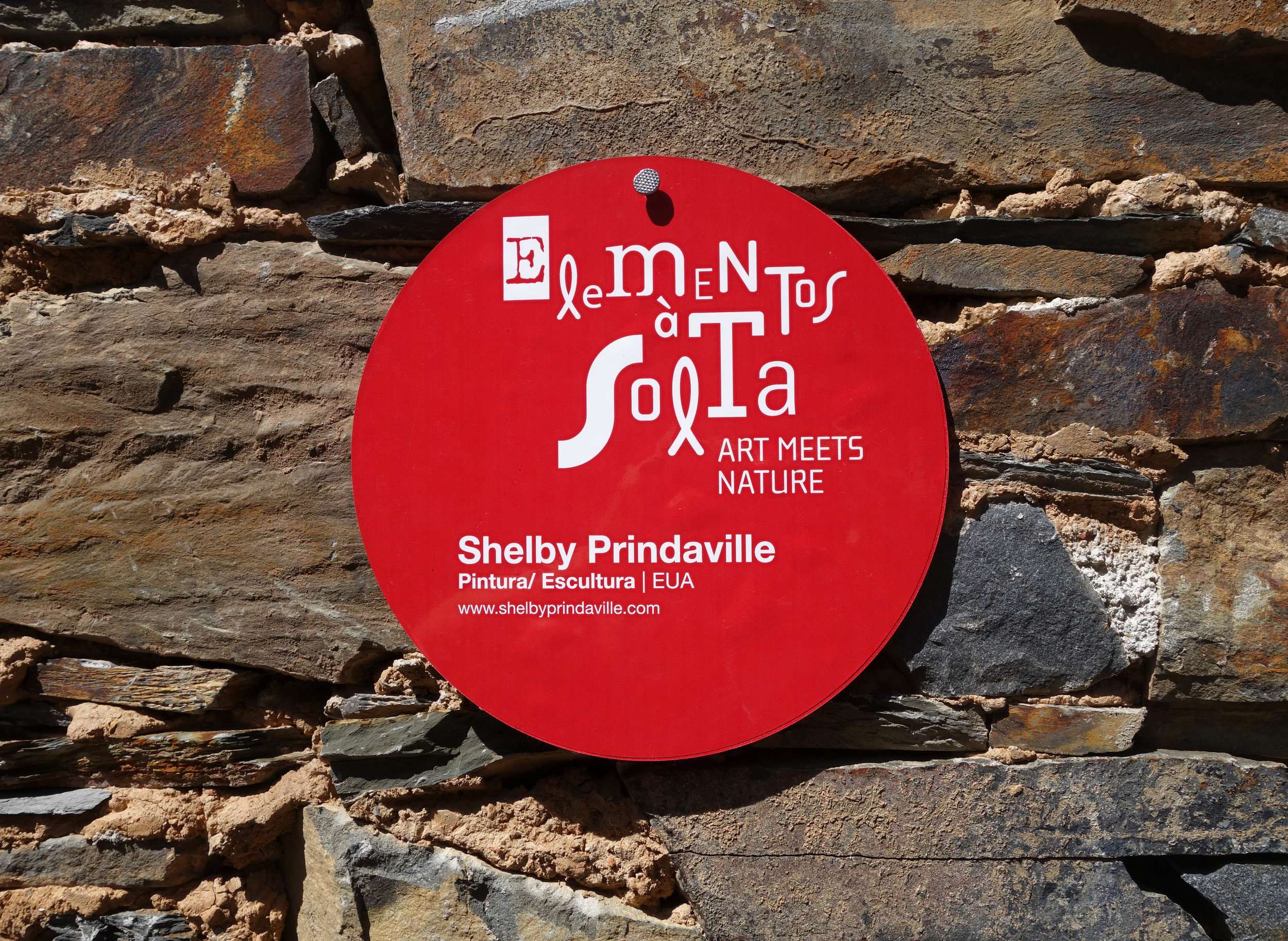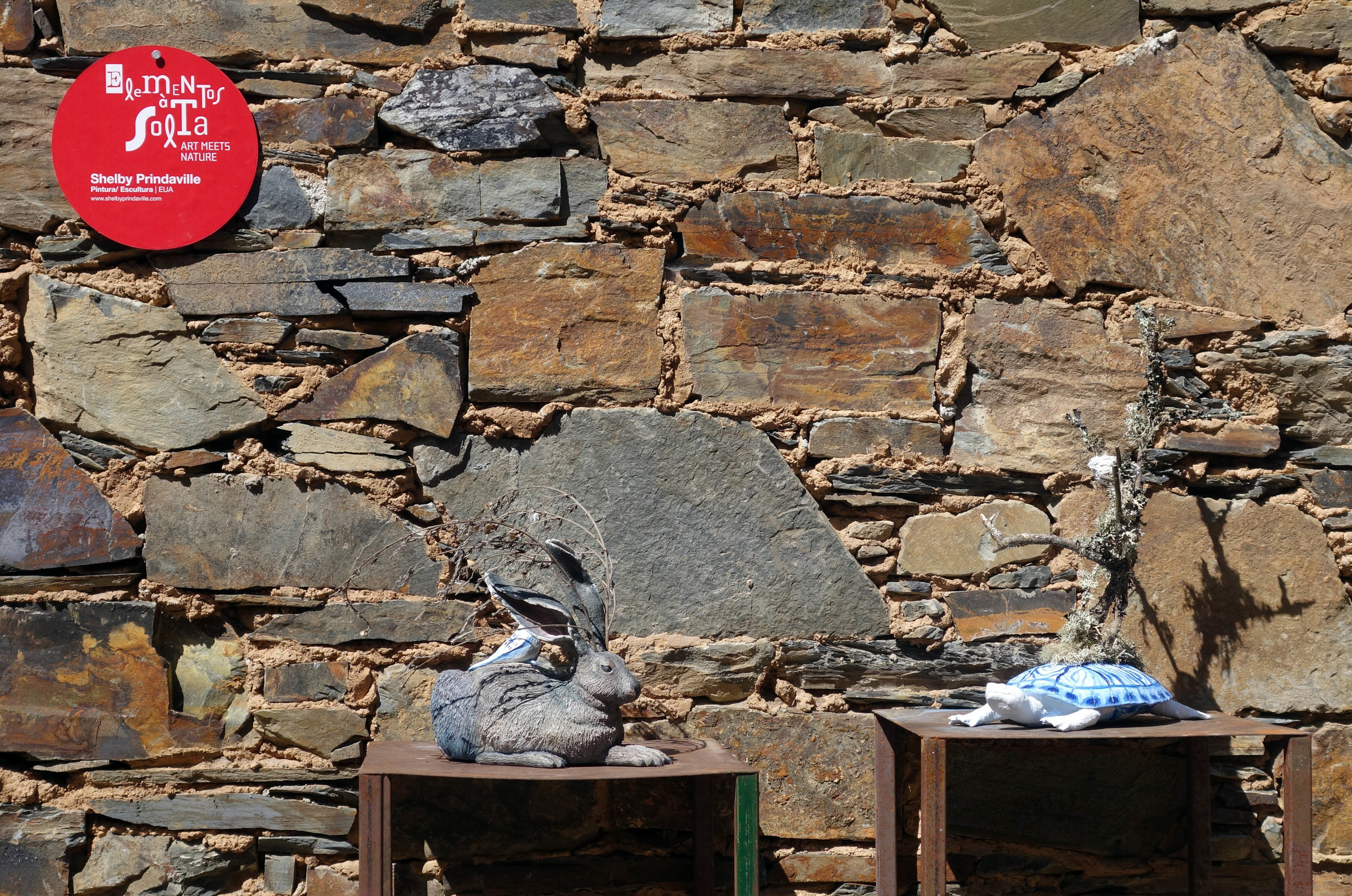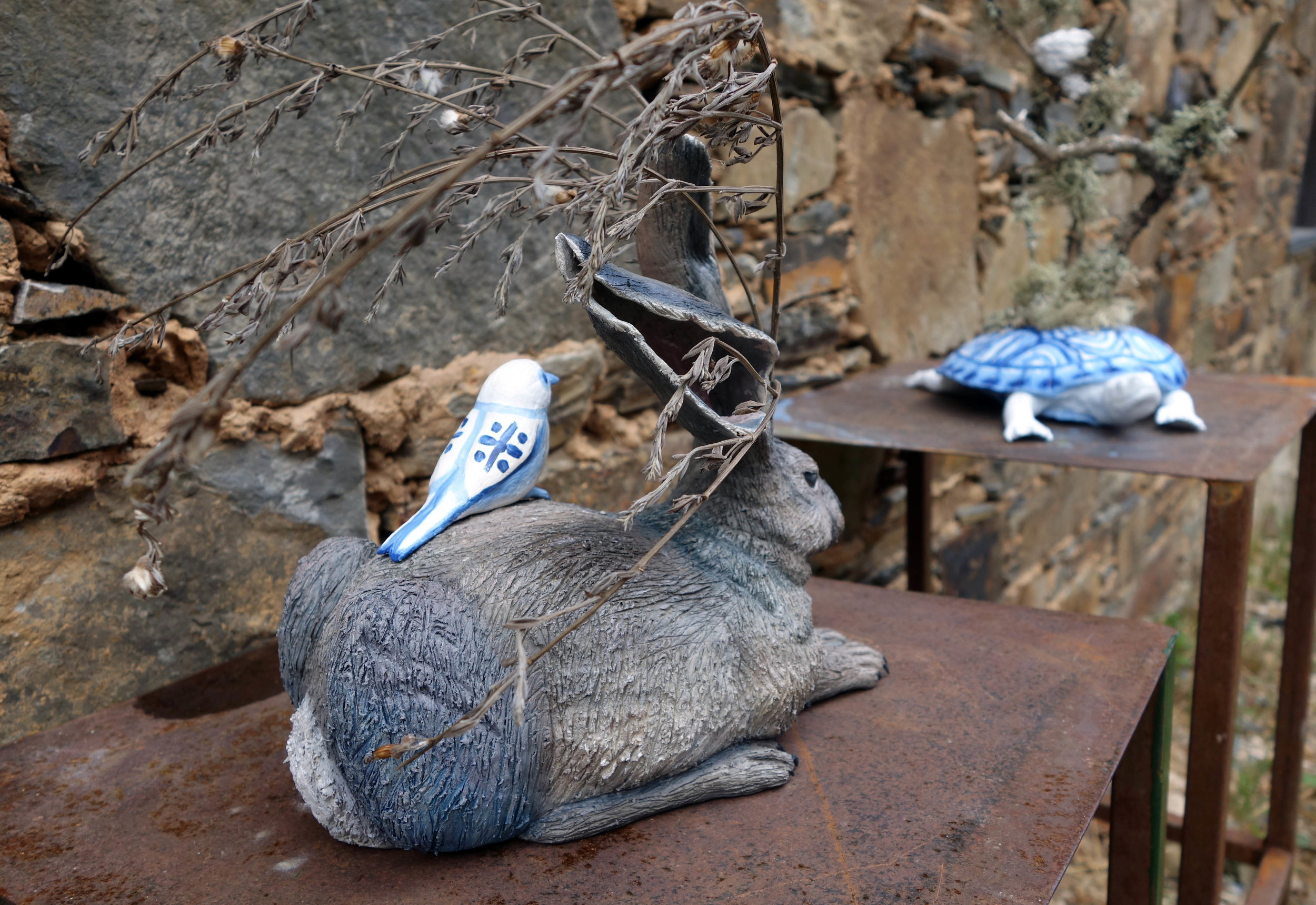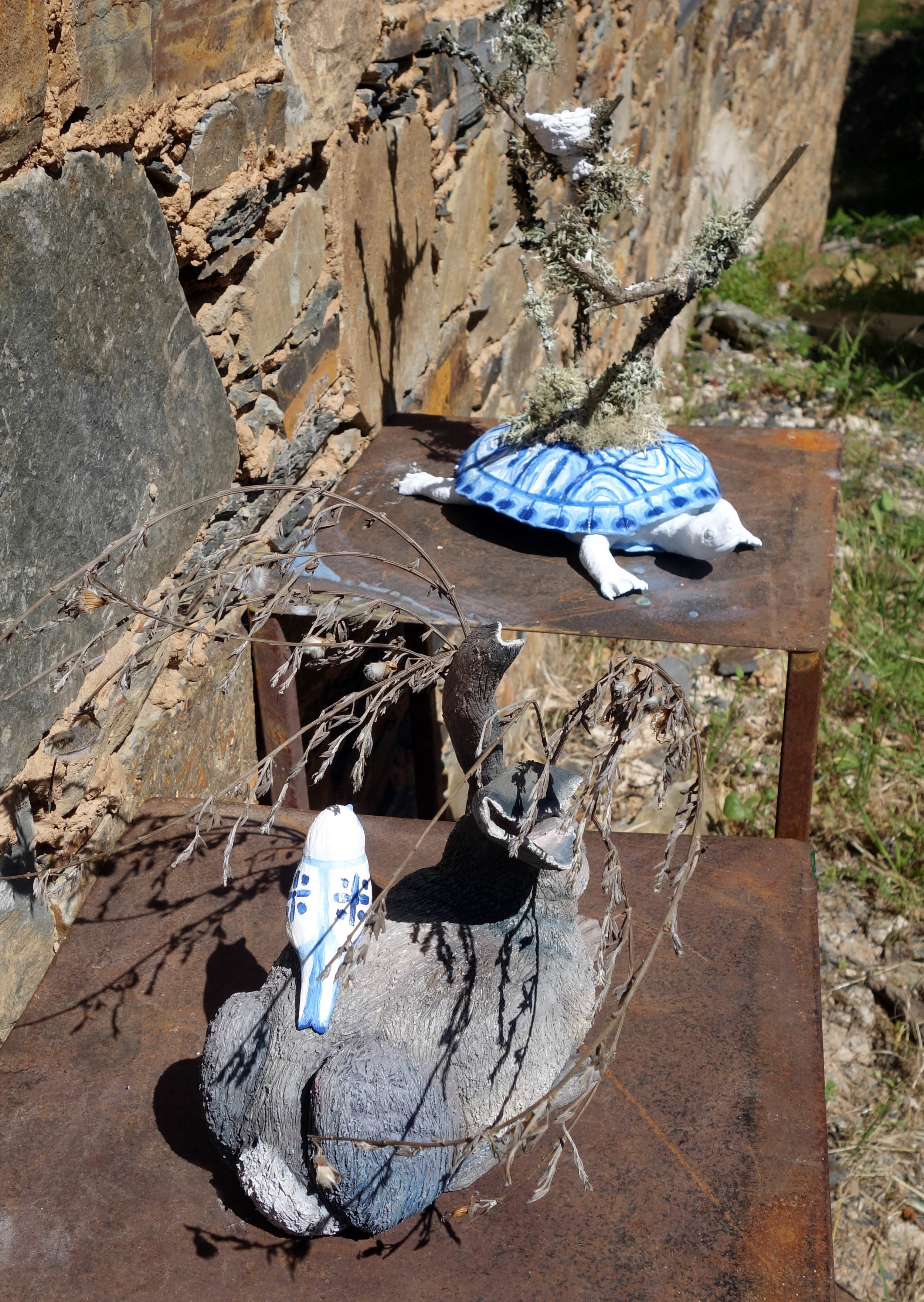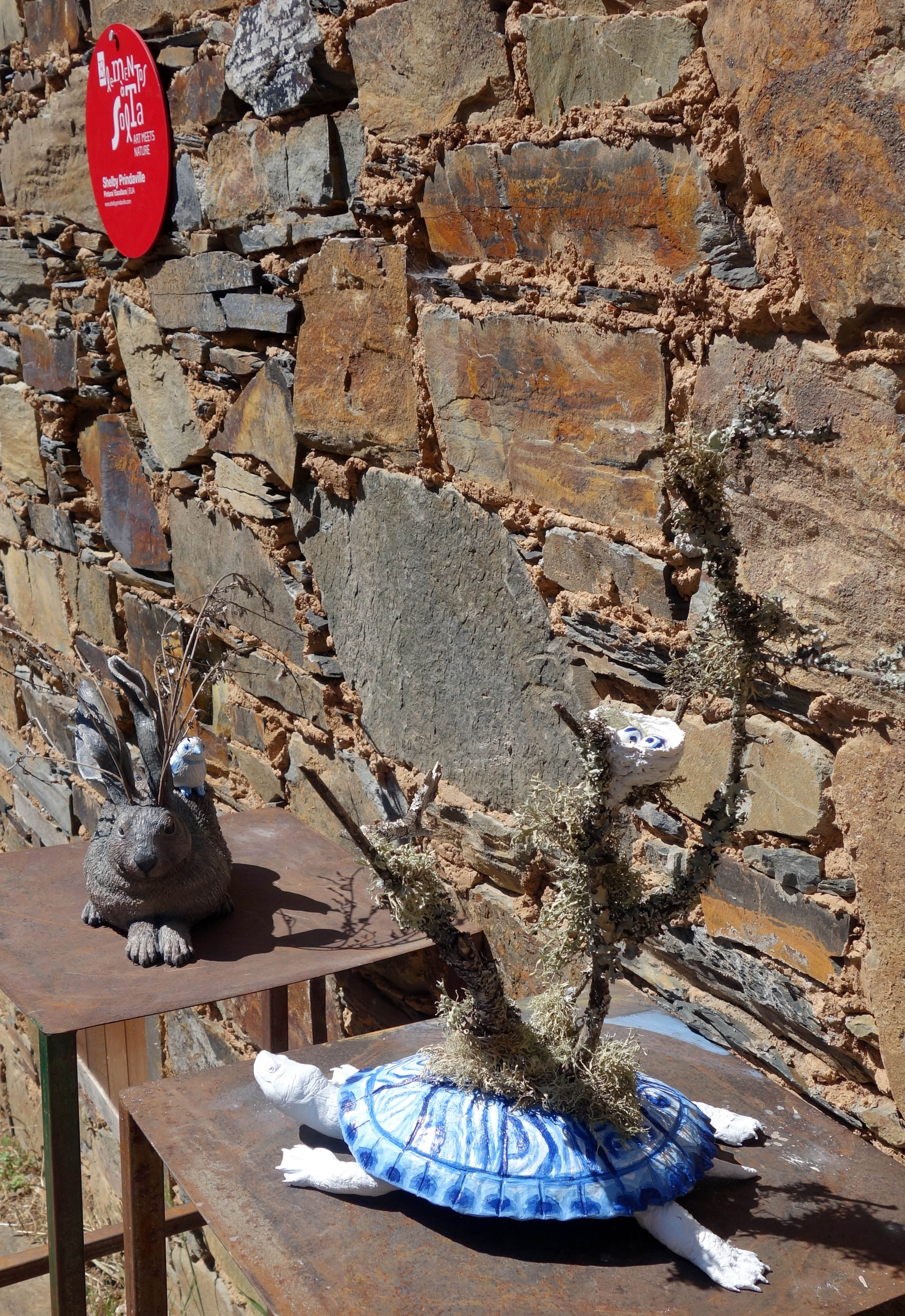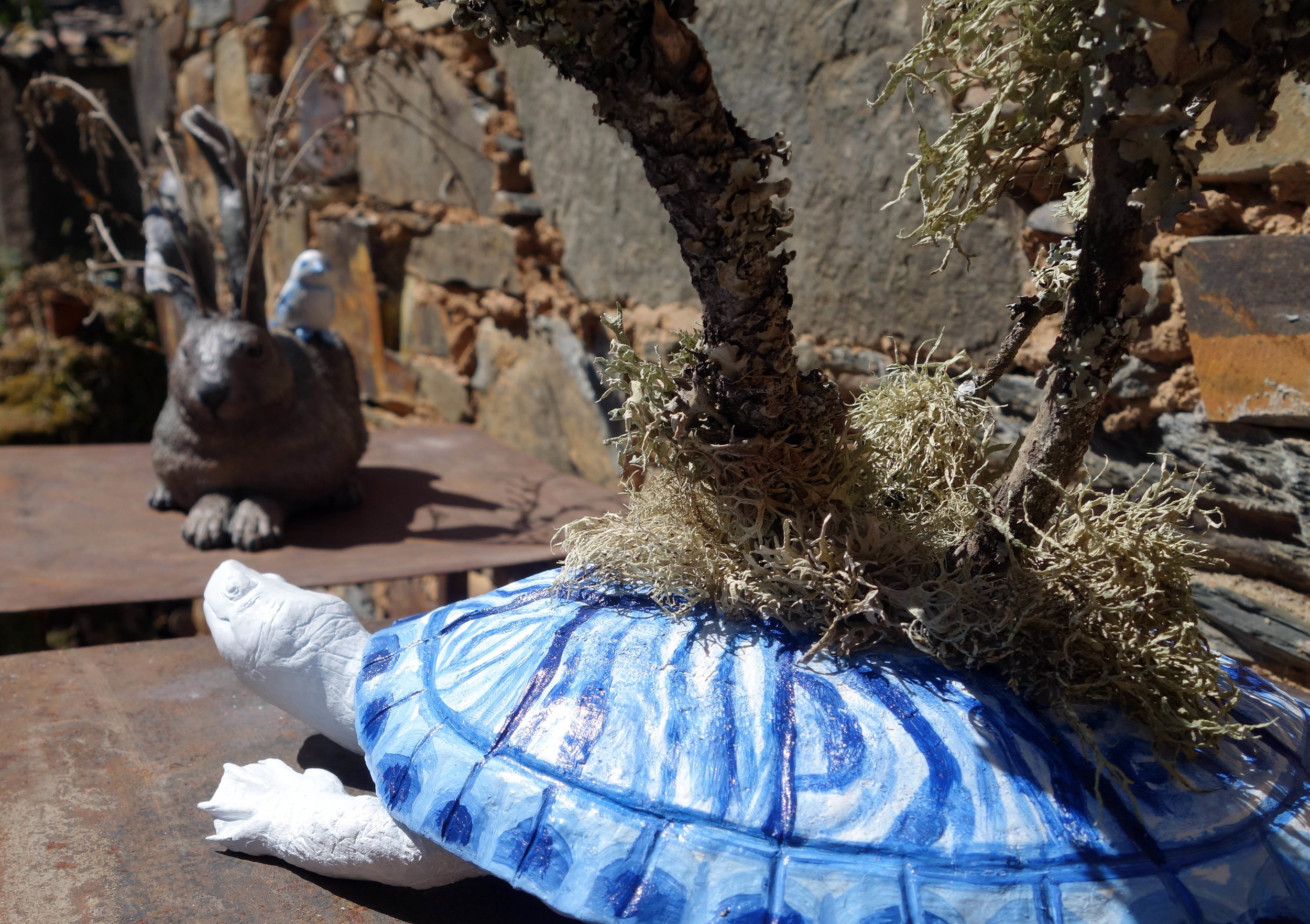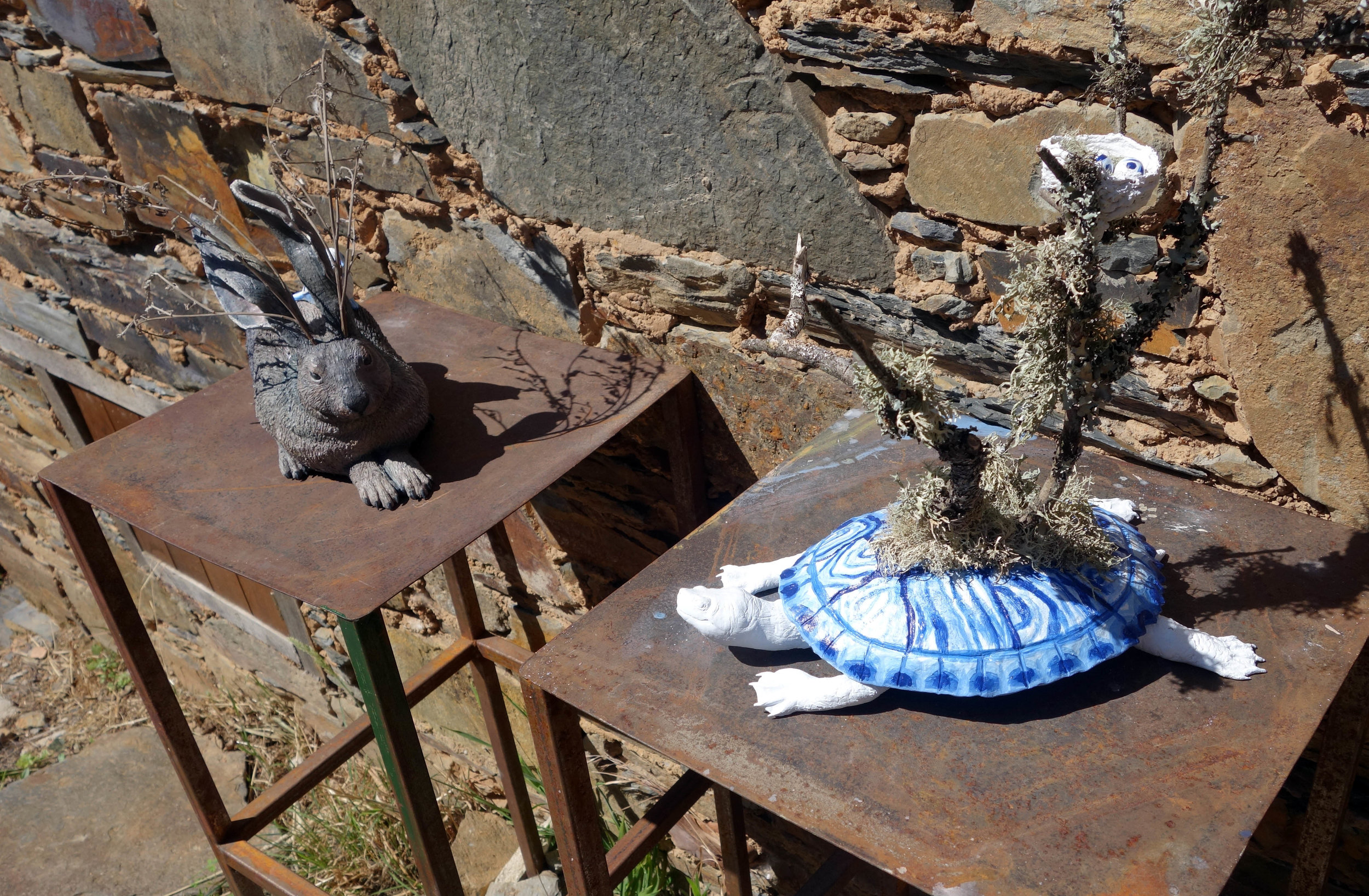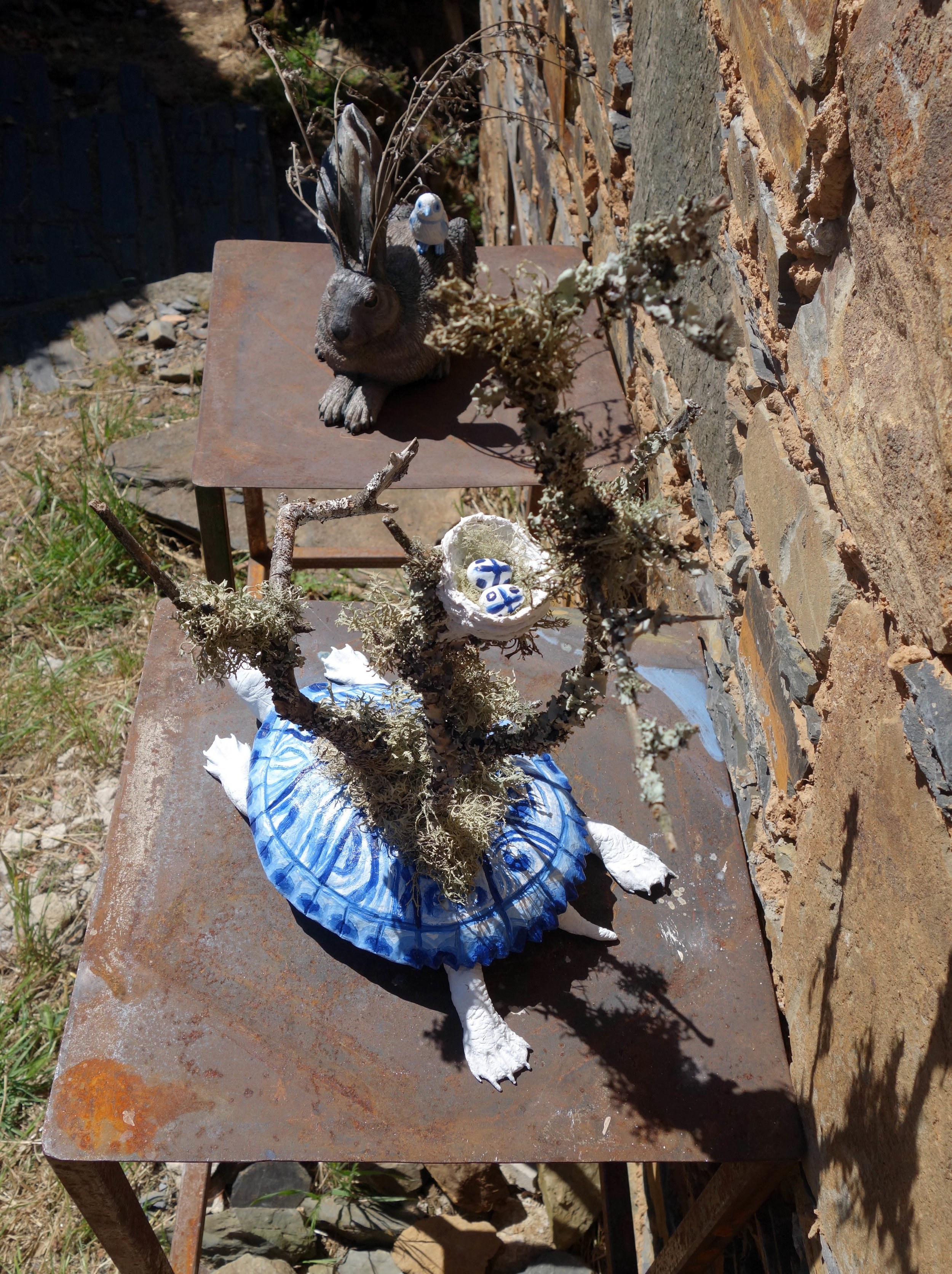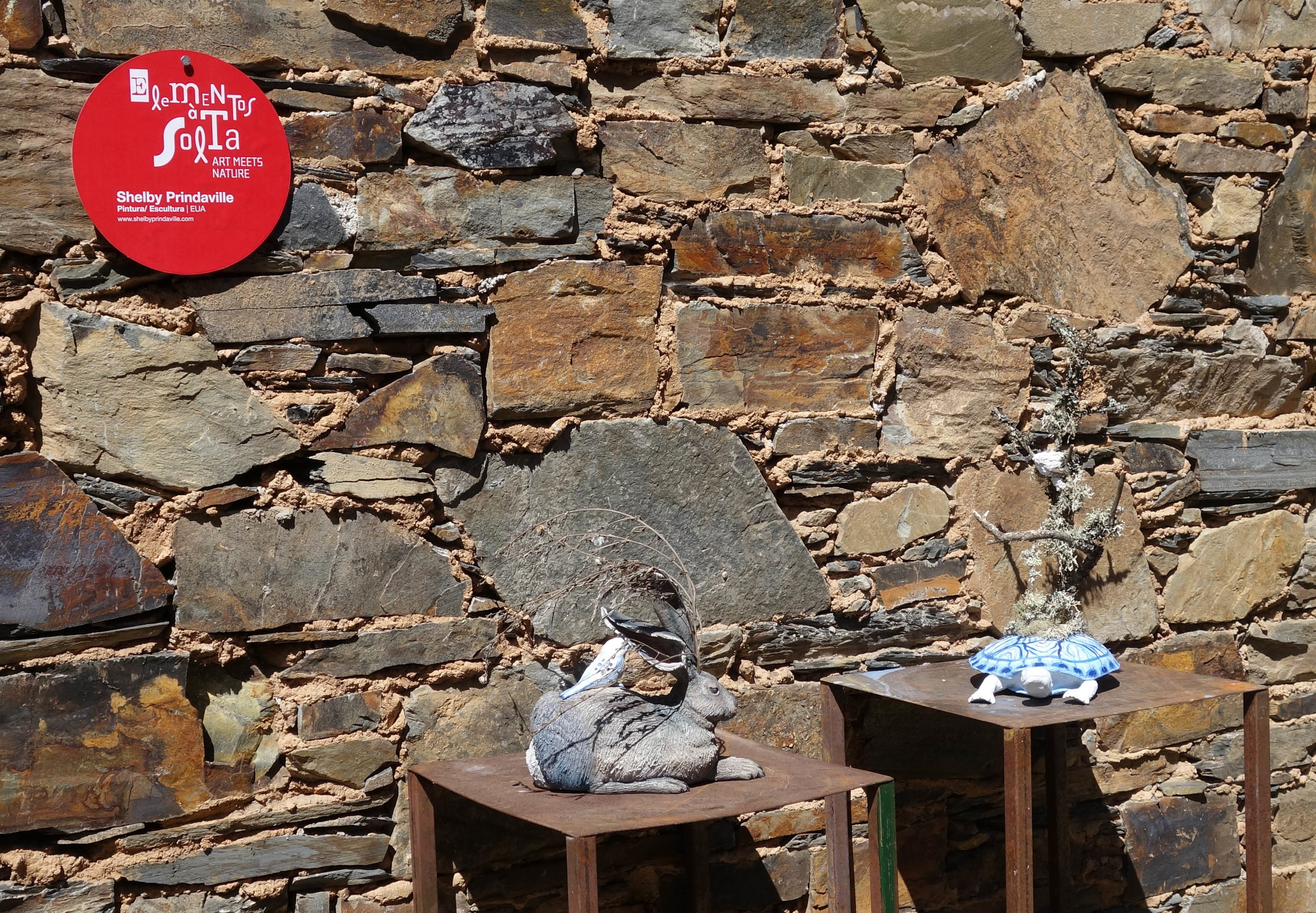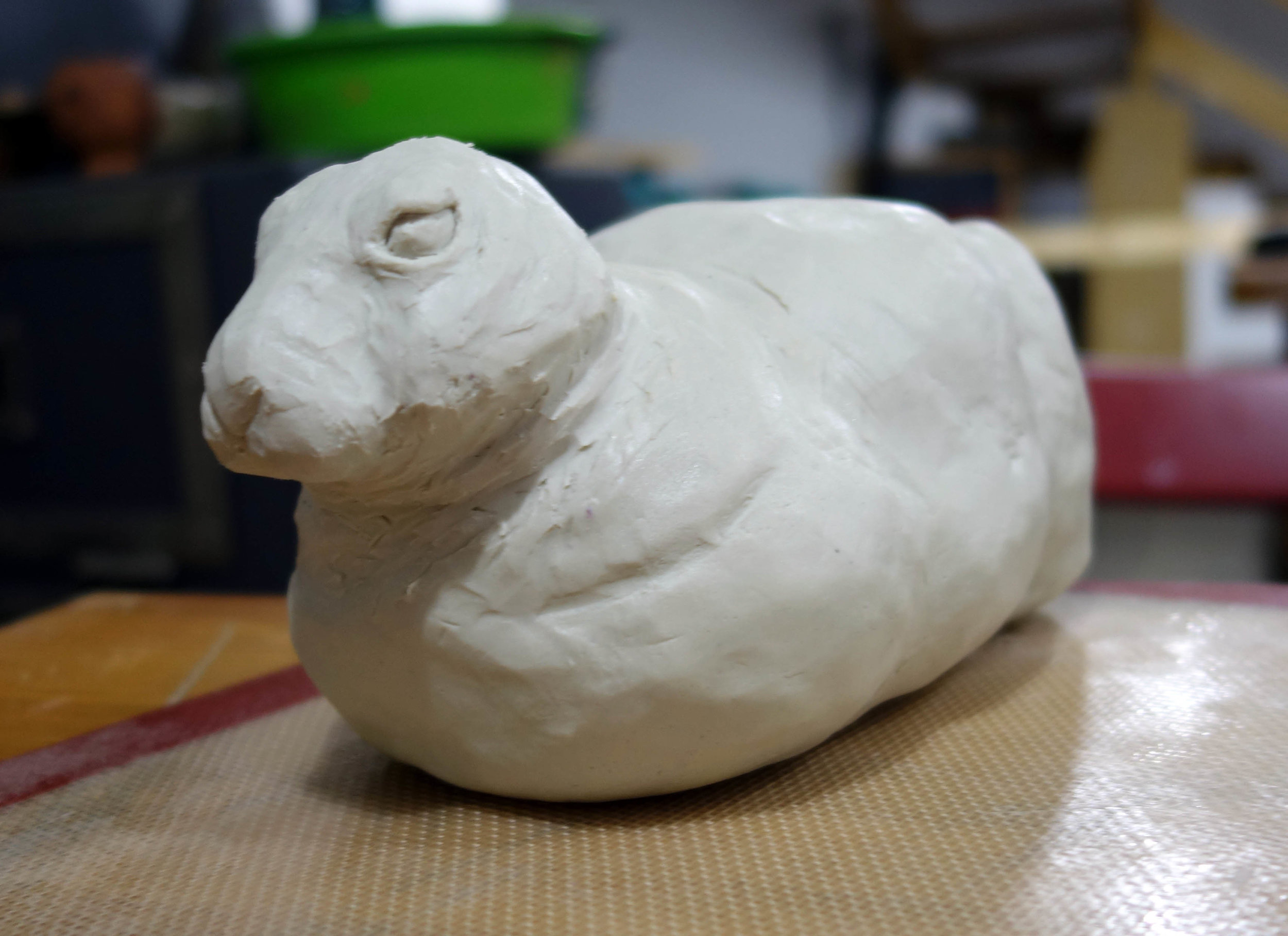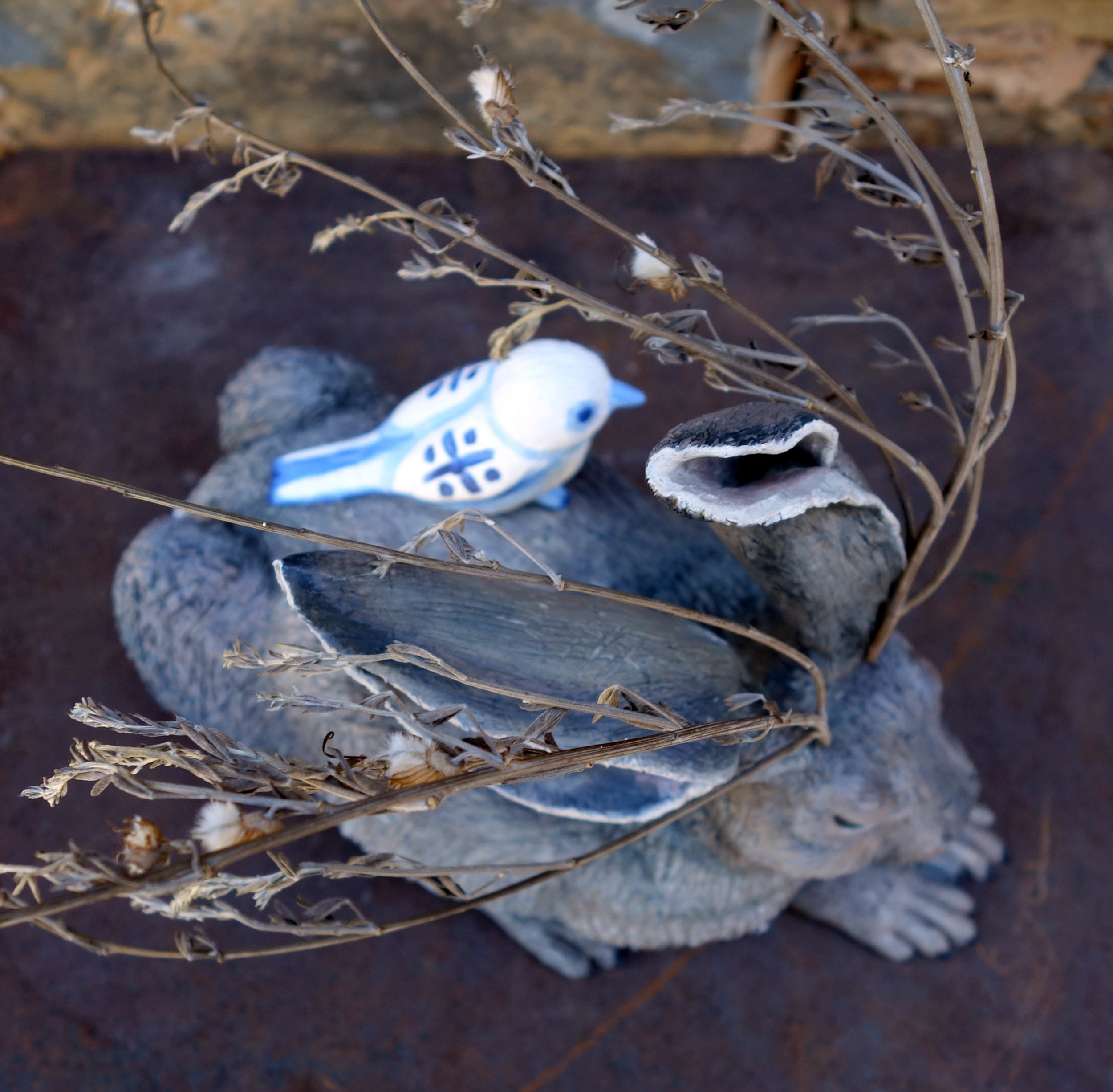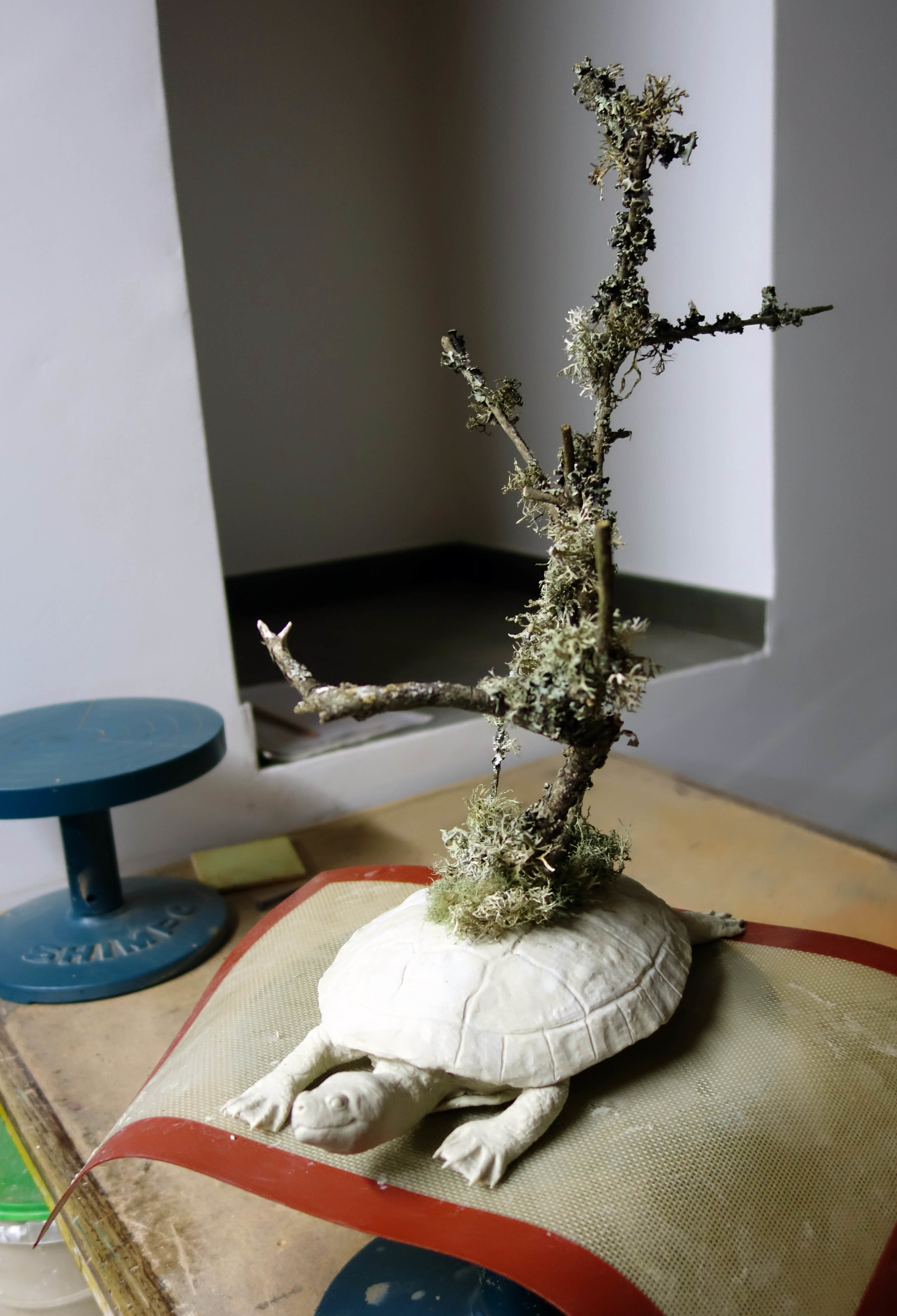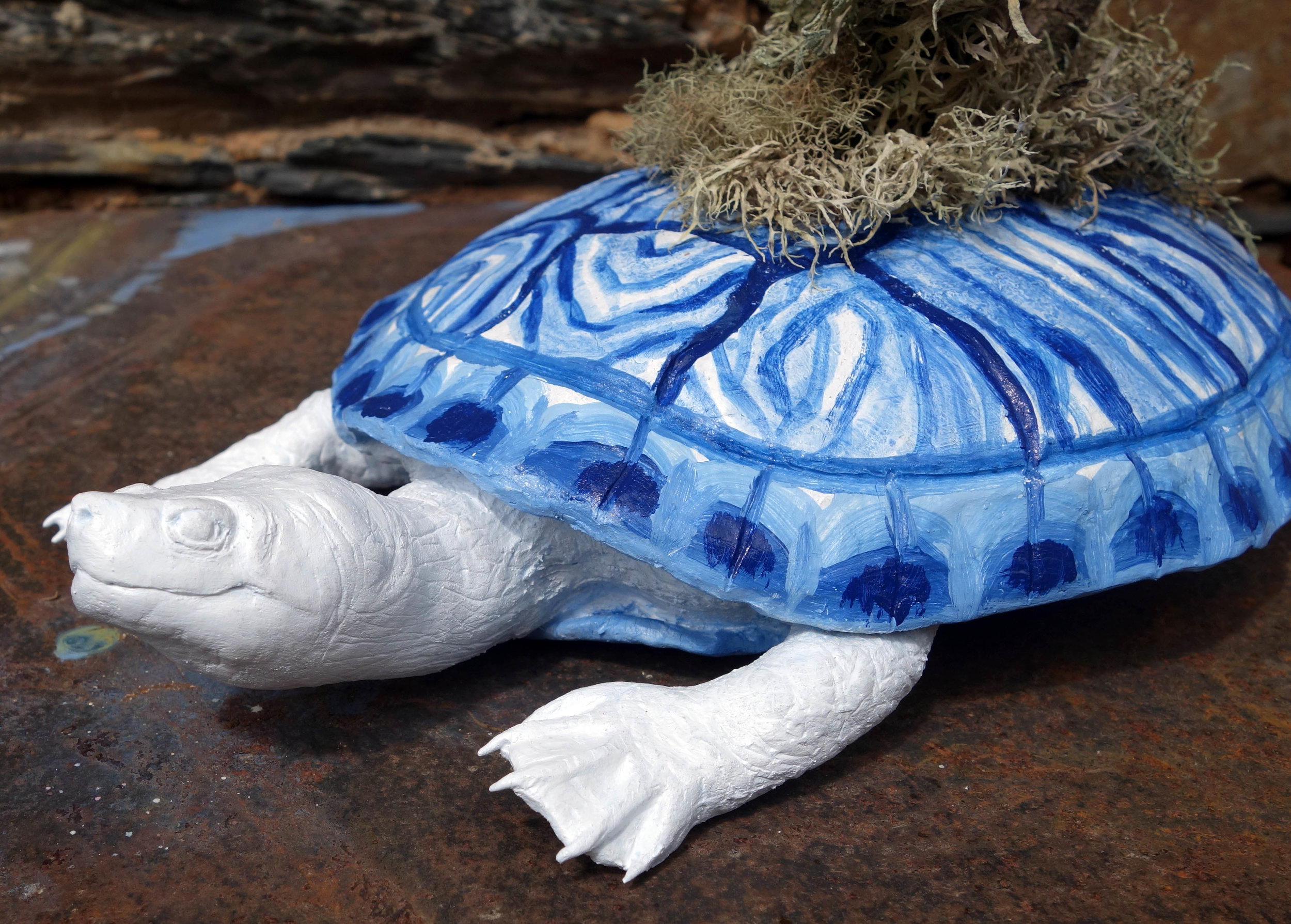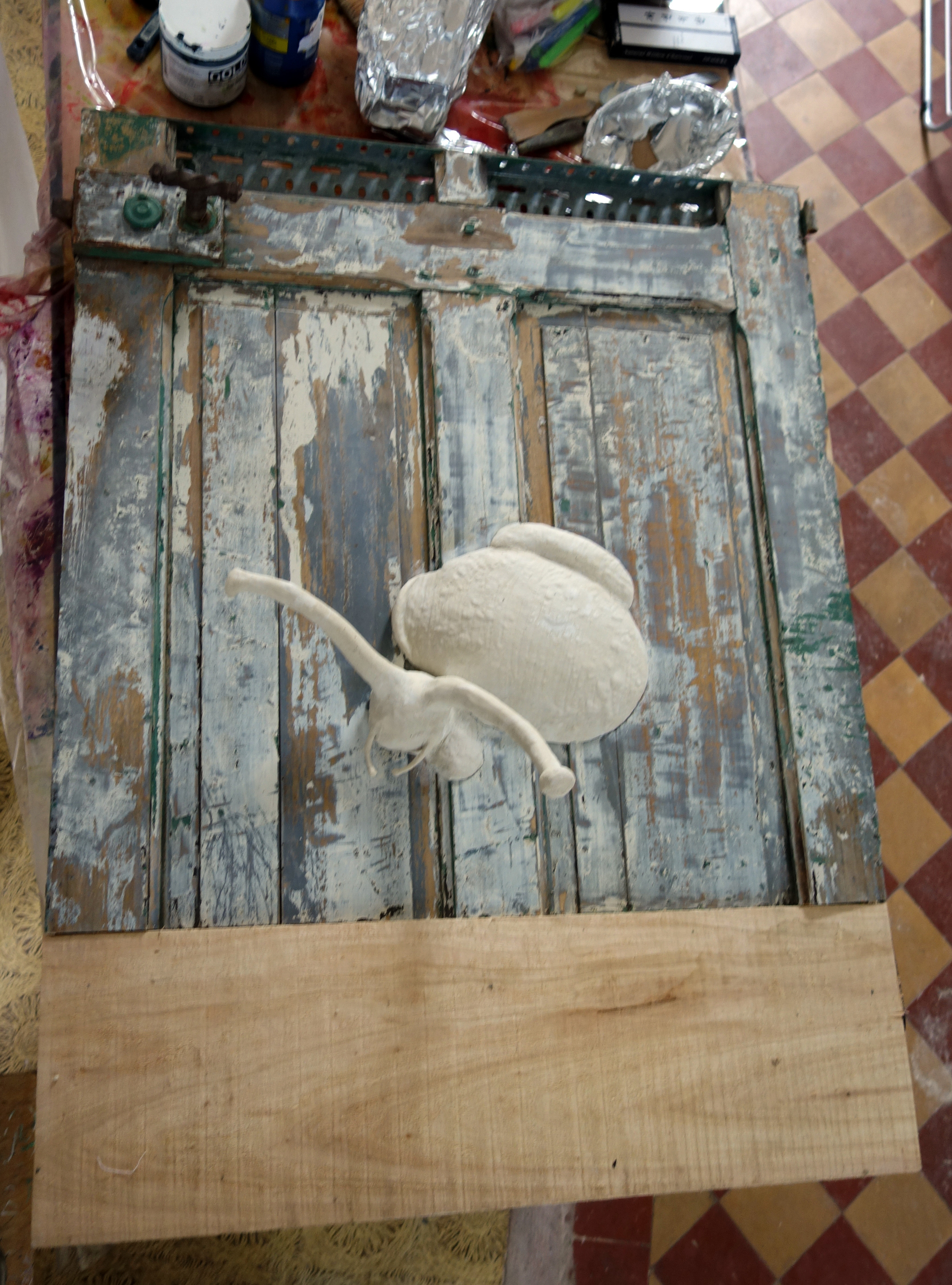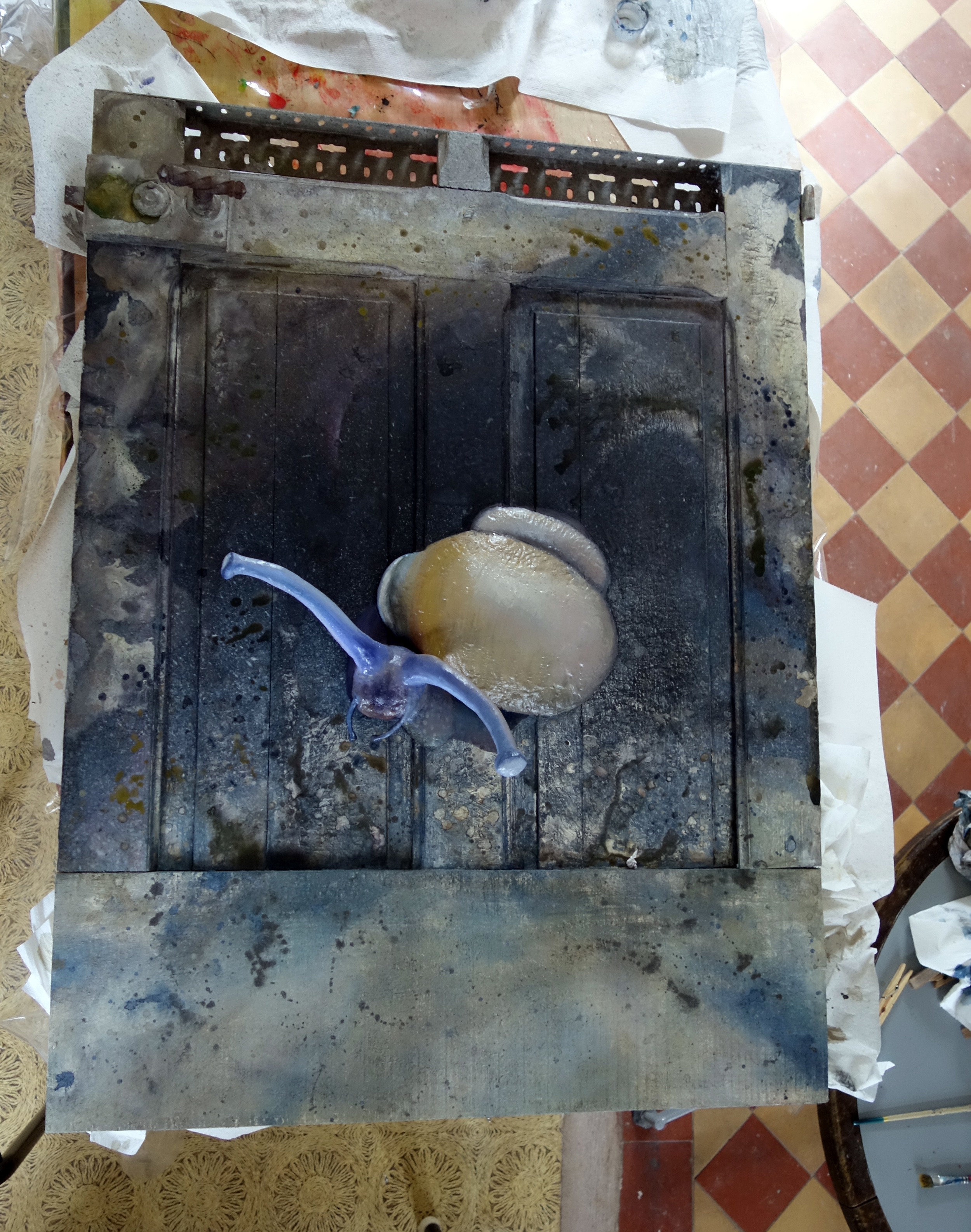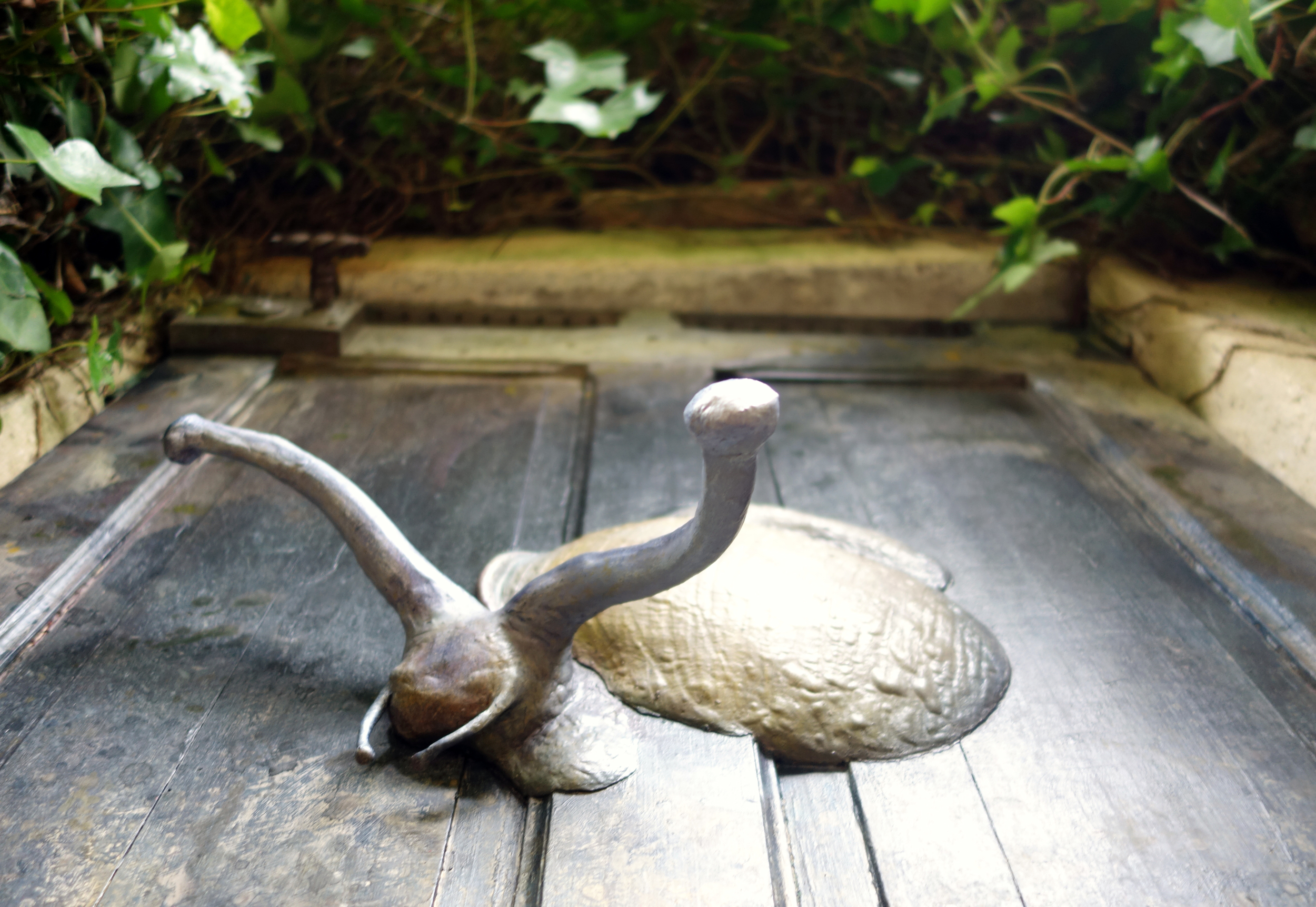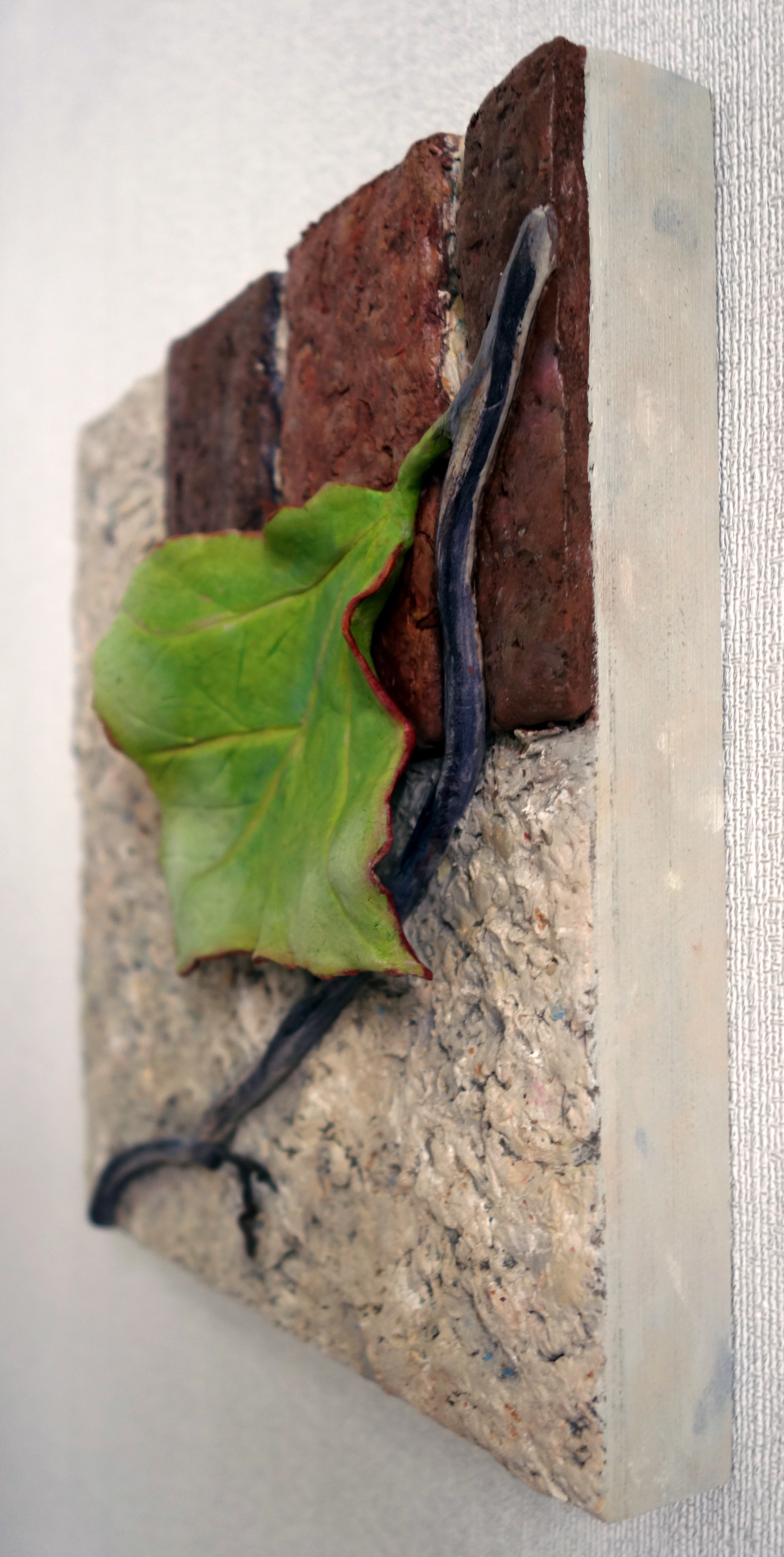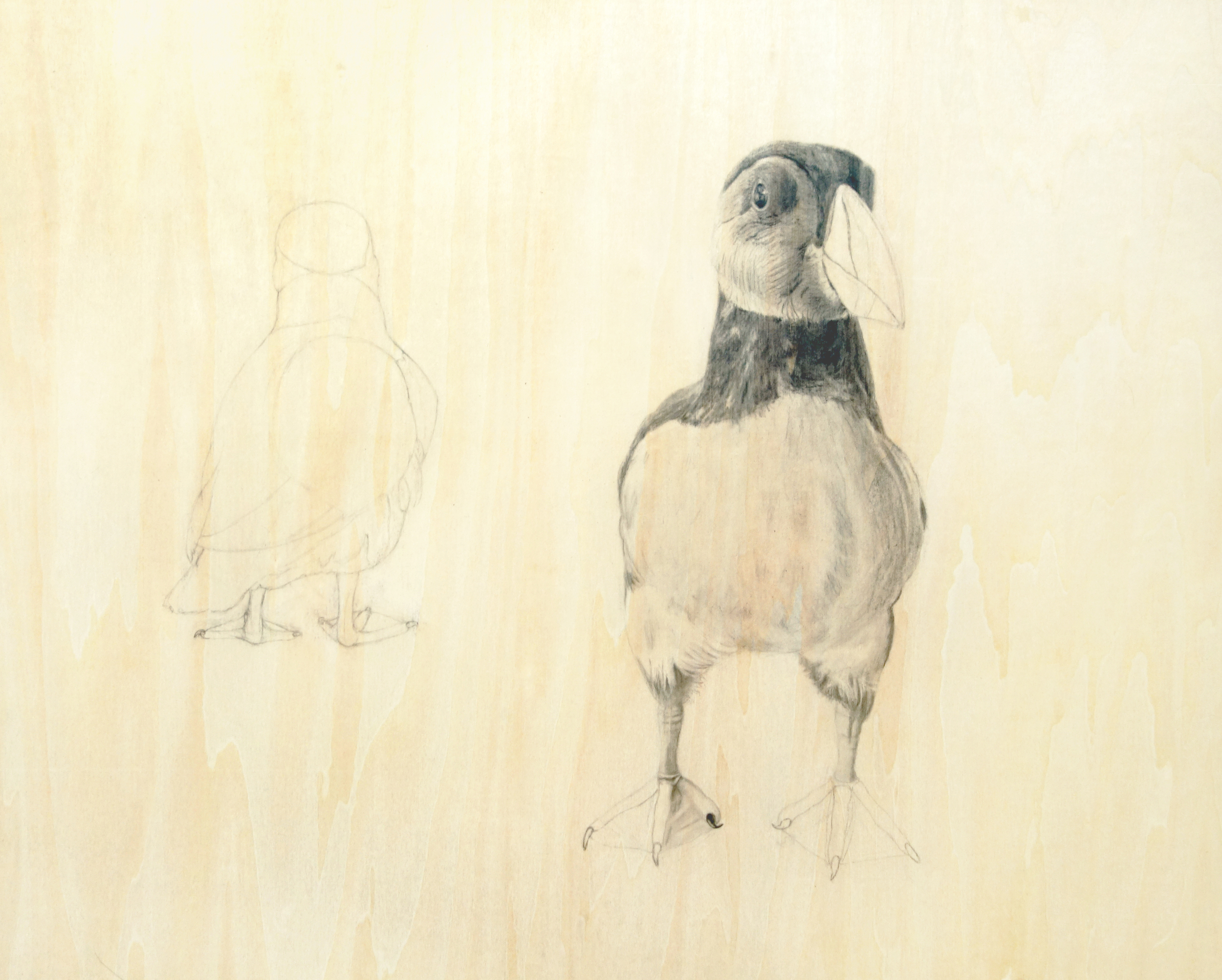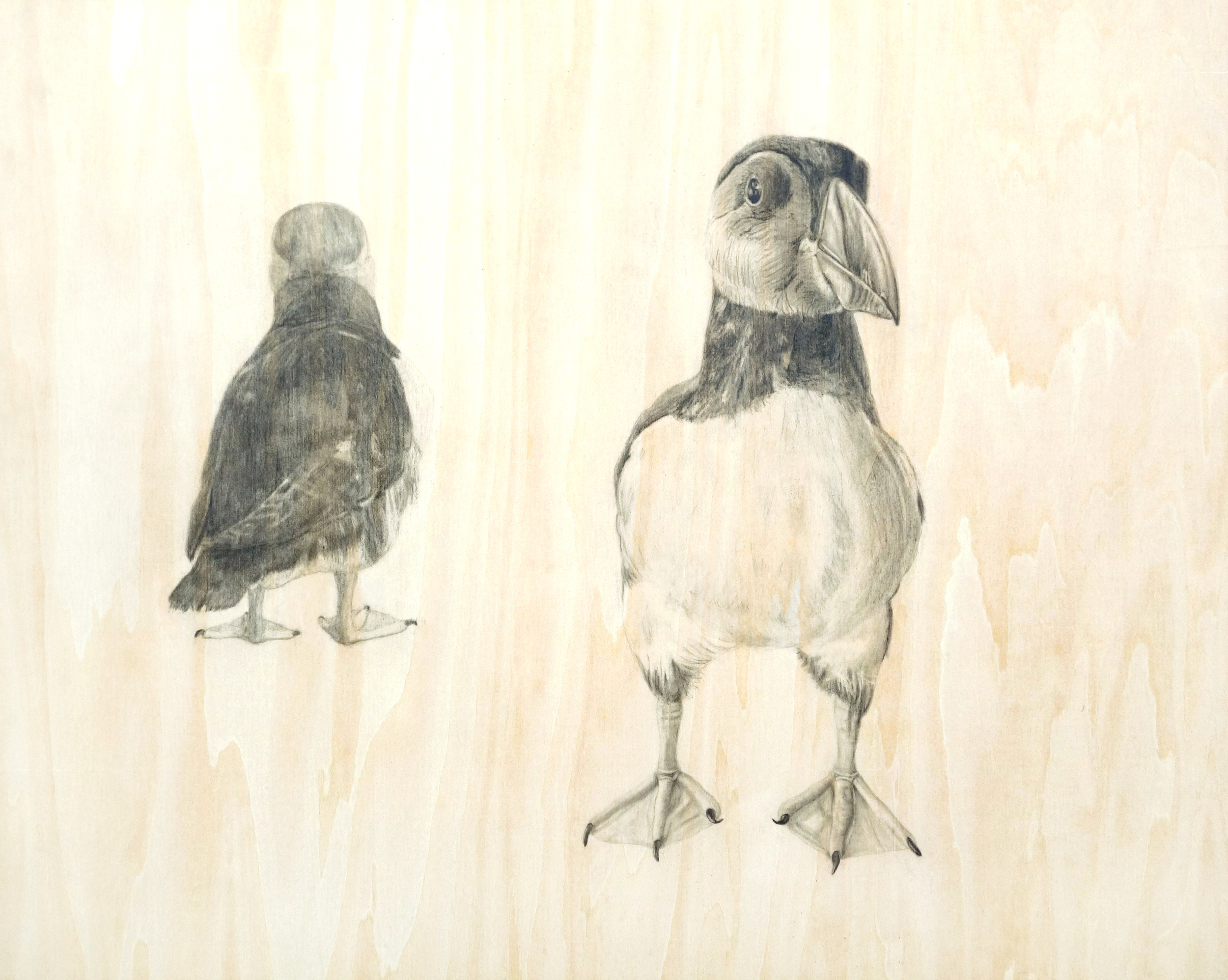When I skyped with Juan about coming here, he mentioned that some of my work that interests him the most are my interactive plant pedestals. I really enjoyed making those, but I made those in graduate school - a period in which I spent almost all my time making artwork and had access to a large woodshop and other facilities as well. Now that I teach and often only really produce work during the summers and while on residency, it's much simpler to create more transportable (and easily exhibitable, which is a bonus) two-dimensional work. I've started to push back at that limitation already - my pieces that I made in France are so delicate that showing anywhere other than locally is pretty difficult, and the sculptures I made earlier this summer in Portugal are even more fragile due to the found branches and lichens I used. I decided I'd take Juan up on the challenge to create some new interactive plant pieces, and began brainstorming even before leaving for Europe.
The clay I helped Dr. John Pojman create, 3P QuickCure Clay, is waterproof, and that's an angle I've been wanting to explore for a while. I decided I'd like to create a sculpture that I'd then house in a glass container underwater, and as algae grew in the container, as algae tends to do when provided with water and sunlight, the sculpture would become partially or totally obscured - except I would coat the sculpture in a glow-in-the-dark powder and provide viewers with a black light to set the sculpture aglow. Even back in Portugal, I'd briefly toyed with the idea of sculpting Balancing Act (my painting of a tower of snails), but then I thought I'd save it for this project instead.
So when I started work in the studio, I began sculpting snails.
A sculpture is different from a painting, though, and in order to have the 3D version of the tower actually stand on its own, I couldn't have the bottom snail be upside down. I didn't want them all to be upright, either, though... so I decided to have one snail be on its side and have that snail be on the bottom of the tower in a nod to the potential instability of all the rest.
After assembling all my individual snails into a tower, I hastily patted some glow powder onto it and cured it (the tower was moderately unstable while uncured). I thought the amount of glow powder that actually adhered to the clay wouldn't be sufficient for my purposes, so after thinking about it for a day, I sprayed it several times with an aerosol satin varnish and each time before the varnish dried I added the glow powder to it until I felt I had a fairly solid coating.
As all this was going on, the fountain water I had collected from the Real Jardín Botánico had been sitting in the window, slowing growing more algae. Once the sculpture's coating seemed dry, I put it into a glass vessel I had purchased from a Chinese bazaar and poured the fountain water (and some additional tap water) in.
The piece will hopefully be ever evolving as the algae grows, but it's already far enough along for me to share some photos!
